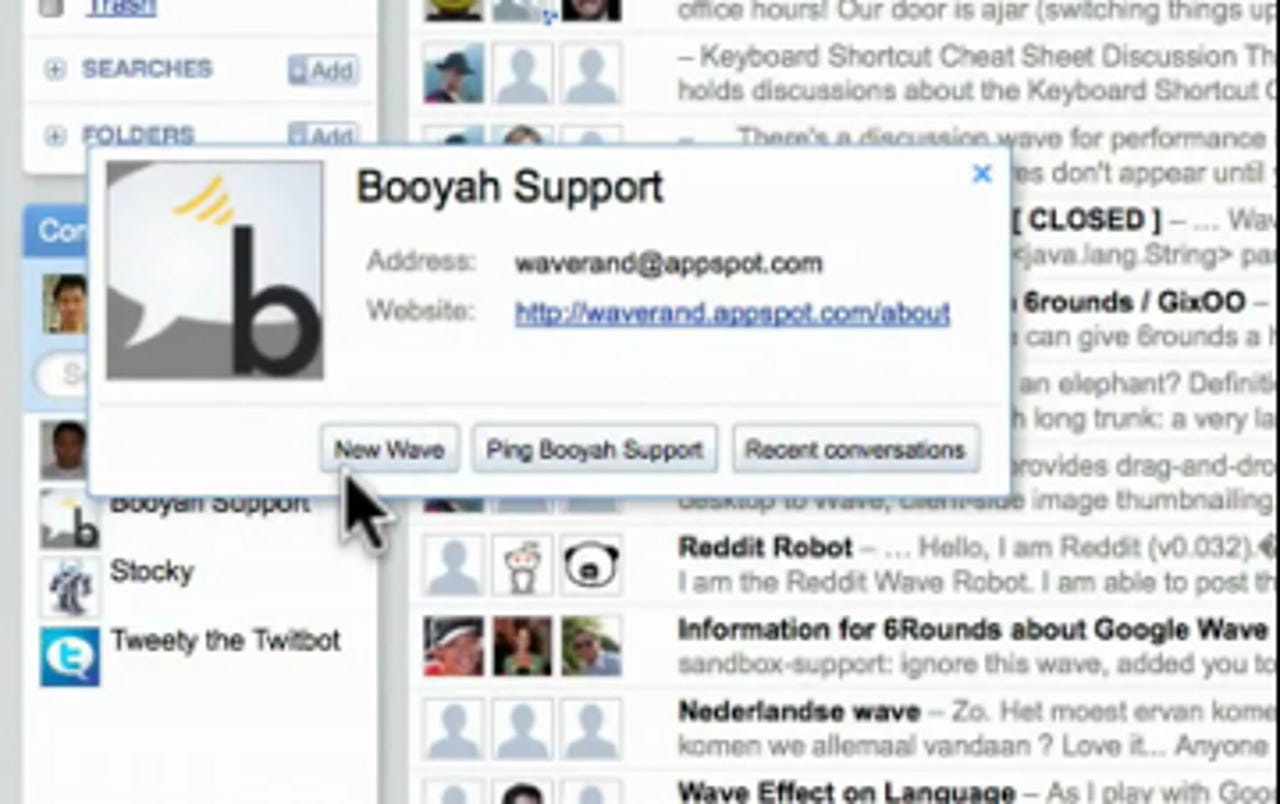Photos: Salesforce.com rides the Google wave with CRM app


Customer service the Wave way
Earlier this year, Google launched a collaboration platform called Wave.
Using the platform, individuals can access shared windows called 'waves' where they can collaborate in real-time, swapping IMs, photos, videos, maps and documents as they work together.
Tech companies are already creating custom apps for Google Wave, with software-as-a-service provider Salesforce.com crafting a wave app that can help companies deal with customer queries.
The Salesforce-designed app integrates the company's CRM tech with the Wave platform, allowing companies to communicate with their customers using Wave while drawing on information held in Salesforce CRM systems.
Here Salesforce demonstrates the Wave CRM app in use by the mobile phone apps company Booyah.
In this picture, one of Booyah's customers clicks to open up a new Booyah wave.
Photo credit: Salesforce.com
The Wave app is connected to Booyah's CRM system so it recognises who the customer is and opens a new window that asks them what their query is.
Using the app, customers can choose from accessing information about their billing and mobile service, adding services or reporting a hardware problem.
Photo credit: Salesforce.com
In this case, the customer has opened the wave to report a problem.
After checking the company's network status and finding there are no reported issues, the chat robot asks the customer for more details about the problem they are experiencing.
Photo credit: Salesforce.com
The robot then picks keywords out of the customer's query and searches for them in articles within Booyah's knowledge base of answers to known problems.
The chatbot then presents the most relevant articles to the user, and displays a button for them to click if the article solves their problem.
Photo credit: Salesforce.com
If it doesn't, the chatbot will then send a private message within the wave to a member of Booyah's customer service team asking them for help.
The customer service representative then takes over from the chatbot and begins communicating with the customer using the same wave.
The idea is that the transition from chatbot to customer service representative is seamless and the customer is not aware of the changeover.
Photo credit: Salesforce.com
If the customer service representative is struggling to resolve the problem themselves they can also send a private wave communication to a colleague asking them to step in and help.
Even if the problem is not dealt with immediately, the customer and the agent can continue using the same wave to correspond.
The Wave app copies all of the information contained in the wave back into Booyah's customer records, held on a Salesforce system, so customer service staff can pull out any useful information when needed.
Photo credit: Salesforce.com